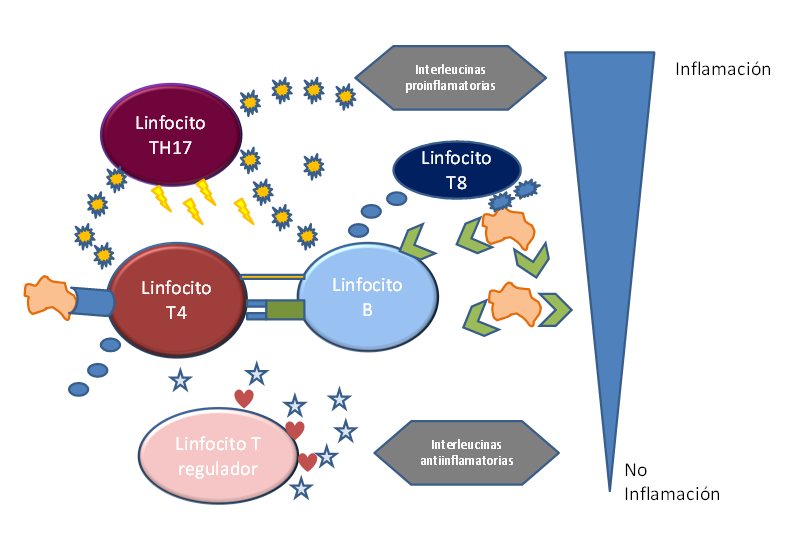Juvenile dermatomyositis
3.1. What is the immune system?
The immune system is composed of cells that are experts in defending us, proteins that act as "messengers" and various organs and tissues. It plays a fundamental role in the defense against external aggressions and in the recognition and tolerance of our own. It is highly specialized to recognize what is "aggressive" to us and destroy it, and what is part of our organism and protect it.
The most important cells of this system are B lymphocytes, T lymphocytes and phagocytes/macrophages. The proteins they use as activation/inhibition messengers are called cytokines or interleukins.
T lymphocytes (especially a type of T lymphocyte called CD8+ cytotoxic T lymphocyte) and macrophages participate in what is called the cell-mediated immune response, in which these "soldiers" interact directly with and destroy the aggressor. B lymphocytes, assisted by T4 (T helper) lymphocytes, are responsible for producing antibodies that block the microorganism. These antibodies are experts in recognizing structures and adhere to them when they consider them dangerous, leaving them "marked" to be eliminated later. This type of response is called humoral pathway or response.
There are also two types of T lymphocytes described more recently: regulatory T lymphocytes (T regs), which slow down the immune response by acting as "pacifiers", and TH17 lymphocytes, which intensely stimulate the immune response by generating inflammation. Their excess has been related to the appearance of autoimmunity.
Our immune system achieves a very fine recognition and also, in spite of its very high complexity, it generally manages to maintain a perfect balance thanks to the communication that exists between its different components.
